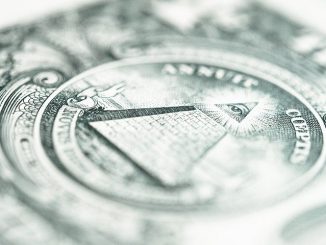Today, Charles Rotblut, CFA who is the AAII Journal Editor wrote:
Federal Reserve Chairman Ben Bernanke continues to be the enemy of savers. Yesterday, the Boston Red Sox fan reiterated his belief that interest rates should be kept at rock-bottom levels for an extended period of time. He views this as necessary in order to keep the economy growing.
When you run an investment group that is largely composed of retirees and near-retirees, it is reasonable to call Bernanke the enemy of savers, because he is the enemy of savers. When one can’t earn anything over one year without risk, something is wrong. Better that the economy grow more slowly, than that savers not get their due for not consuming.
Saving deserves a return. Let the Fed raise the Fed funds rate by 1%, and they will see that there is no harm to the banks, and little harm to the economy. Once you have 1% slope between twos and tens you have more than enough oomph to make the economy move. What, does the AARP have to bring a age discrimination lawsuit against the Federal Reserve to make this happen? The Fed is discriminating against the elderly.
But now consider another issue — money market funds. I consider them to be superior to banks because their asset-liability mismatch is so small, and they have generated small losses relative to banks and other depositary institutions.
Prime money market funds in the US have been investing 50% of their assets in the Commercial Paper [CP] of Core Eurozone Banks. Well guess what? If the Greeks and other fringe members of the Eurozone default, and the core governments don’t bail the situation out, those holding CP of core Eurozone banks may take a loss. And this is at a time where French and German Banks are facing liquidity issues. Take time to review your money market funds.
The problems of the US and China are significant, but the problems of the Eurozone are pressing. The endgame there will arrive more rapidly because the underlying structure is unstable. One currency can’t serve multiple cultures. Also, there should have been an Eurozone exit plan designed in from the beginning. It was hubris to think it would never need that level of adjustment.
It seems like the ECB is becoming a repository of euro-fringe debt, and perhaps the IMF as well. After all, it doesn’t cost the ECB anything to absorb those debts, but it indirectly spreads the risk to the euro-core nations if there is ever a default or unfavorable restructuring. A central bank can’t go broke, but it can impose problems on those that use the currency if defending the central bank exacerbates other problems in the economy. (E.g., printing money to cover over bad debts absorbed by the bank, while inflation rolls on.)
On a slightly different level, I’m not sure that the banking regulators in the US or Europe really got the main lesson from the crisis. Risk management is liquidity management. I still think that banks rely too much on short liabilities to finance illiquid, longer assets. One advantage of mark-to-market accounting is that it can reveal those mismatches to investors, or perhaps, to regulators. Extra capital can help, but it is usually not enough when there is a run on short-term liquidity, particularly because capital is the excess of assets over liabilities. If there are not enough liquid assets to meet the redemption of liquid liabilities, the result is insolvency.
“But that’s a liquidity problem, not a solvency problem — just give it time and the market will normalize, the assets are worth more than the liabilities anyway.” But at such a time, no one wants to buy the longer, less liquid, lower quality assets. If the bank could raise liquidity, it would. It can’t, so it is not only illiquid, but insolvent. It’s always cheaper to issue liquid liabilities, because those are attractive to savers and investors, but they a poison in a crisis.
My fear here is that there may be another call on liquidity that forces the Fed or the ECB to backstop banks. Not sure what would cause it; it’s always hard to pick which straw will break the camel’s back.
Thus I say be cautious at present; have some safe assets available in case we have a panic that emanates out of Europe, and has second-order effects on the US.
- Bulenox: Get 45% to 91% OFF ... Use Discount Code: UNO
- Risk Our Money Not Yours | Get 50% to 90% OFF ... Use Discount Code: MMBVBKSM
Disclaimer: This page contains affiliate links. If you choose to make a purchase after clicking a link, we may receive a commission at no additional cost to you. Thank you for your support!




Not only do low interest rates constitute a war against savers, so does the money printing. When the Fed prints money it generates inflation that destroys the value of the money you already have. It is like a hidden tax … a hidden tax to pay for the bailout of the too-big-to-fail banks. The large financial institutions have both the tools and the access to profit from inflation that the average investor does not. It’s nothing but legalized stealing.